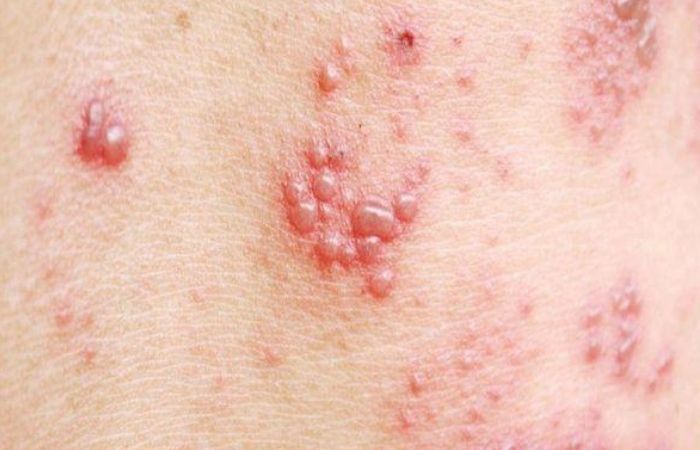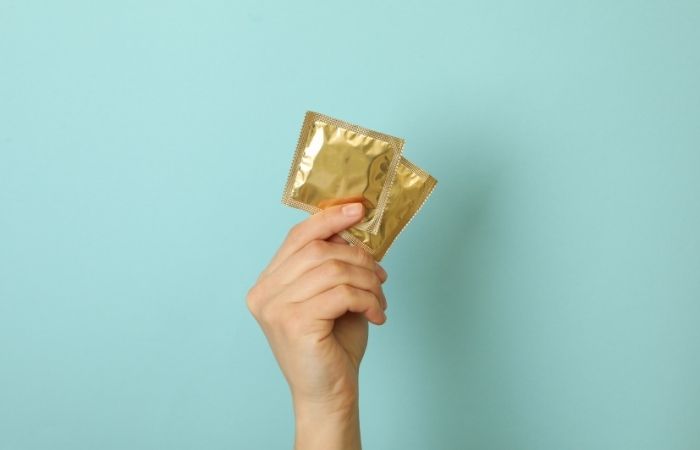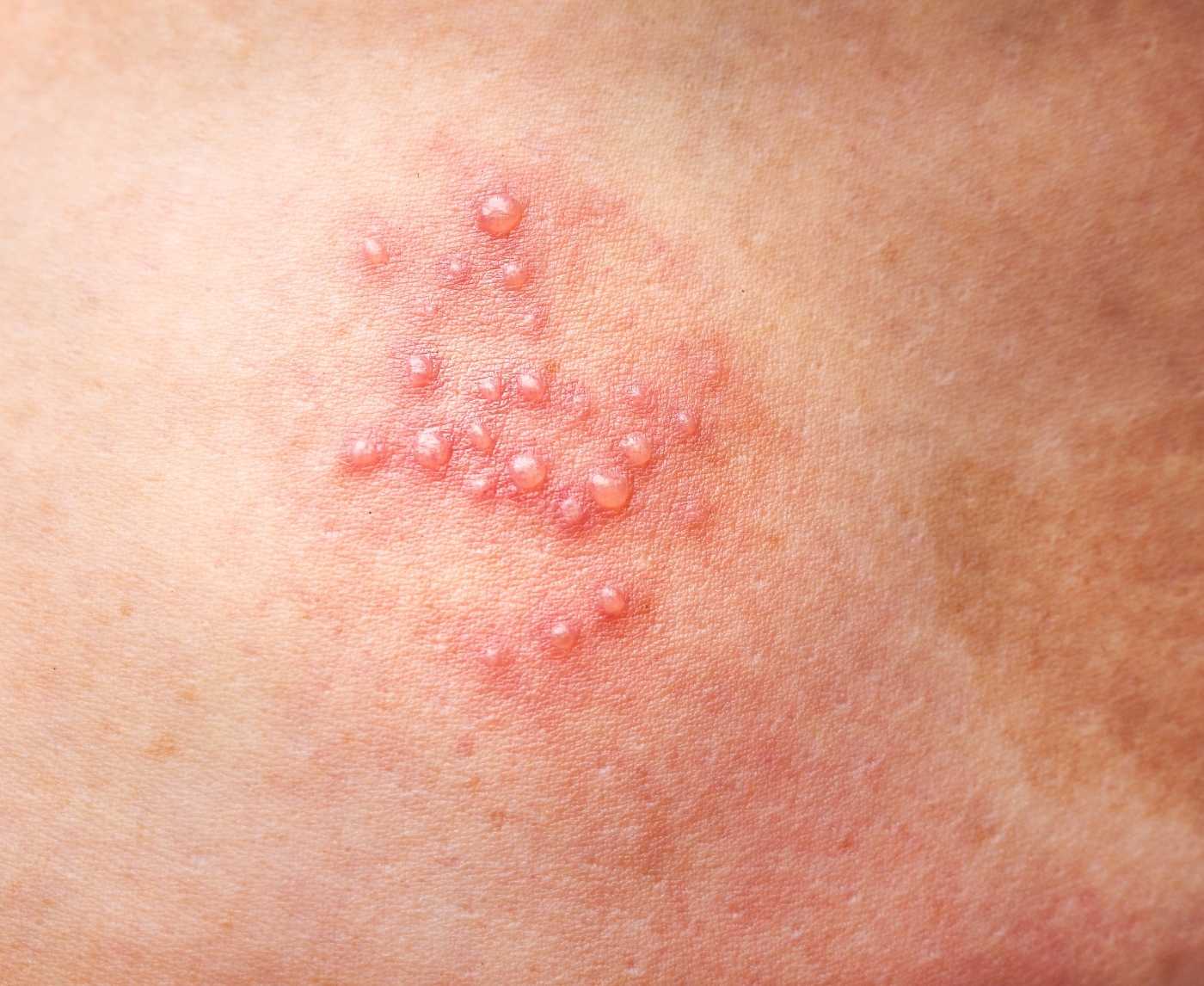How Long After Exposure Can Chlamydia Be Detected?
Quick Answer: Red spots on the vulva or vagina can be caused by STDs like Herpes, Syphilis, or HPV, but they’re also commonly linked to shaving irritation, yeast, allergic reactions, or friction. Testing is the only way to know for sure.
Why You’re Here: The Spiral of Symptom Panic
Sofia, 26, was three days post-hookup when she noticed a single red bump near her inner labia. It wasn’t itchy, but it looked angry. She scrubbed harder in the shower. It got worse. By day five, she was on Reddit, searching “vaginal herpes red dot or pimple,” convinced she’d ruined her life. What she actually had was a friction sore from rough sex and a latex reaction from the condom.
But in the middle of that anxiety spiral, logic is hard to find. Red spots bring shame, dread, and a sense of isolation. But they’re incredibly common, and more often than not, they’re not what you think. Let’s start with the possibilities and then help you figure out what to do next.

People are also reading: Why So Many People Have Herpes and Don’t Even Know
Common Causes of Red Spots on the Vulva and Vagina
Before jumping to the worst-case scenario, it helps to understand that red spots can arise from dozens of reasons, not all of them related to sex. Some are totally harmless. Others are signs that testing is a good idea. Here’s a look at the most common culprits:
Table 1. Common causes of vaginal or vulvar red spots, with indicators for whether they may be STD-related.
This Isn’t Just Razor Burn, And Here’s Why
Sometimes what looks like a shaving bump isn’t. The most deceptive STD in this category is Herpes, which can start as a single red bump before evolving into a blister or ulcer. The tricky part? The early redness often shows up before pain or itching begins. That’s why so many people dismiss it, until it gets worse.
Another confusing one is Syphilis. The chancre, a red, firm, often painless sore, might sit unnoticed for weeks, especially if it's internal or mistaken for a harmless bump. It's not itchy. It doesn't ooze. It just... sits there. And that quietness is what makes it dangerous to miss.
Nia, 33, thought her spot was a bug bite. By the time she tested, her syphilis had progressed to the secondary stage.
“I didn’t even feel sick,” she said. “Just tired. But that red dot was the only clue.”
On the flip side, we’ve seen dozens of people panic over razor bumps, only to learn that their spots faded within days without any treatment. Which brings us to the question that matters most: how do you know?
When to Get Tested (And When to Wait)
Here’s the part no one wants to hear: even if your spot looks suspicious, the test might not pick it up right away. That’s because most STD tests rely on something called a “window period”, the time between exposure and when the infection is detectable in your body.
Herpes is notorious here. Swab tests work best during an active outbreak, but blood tests for antibodies may not turn positive until 4–12 weeks after exposure. Same goes for Syphilis, which may not show on a blood test for weeks after the chancre appears.
Table 2. Testing windows for red-spot related STDs. Earlier testing is possible but may require retesting for accuracy.
The 5-Day Trap: Early Testing That Misses the Mark
Rachel, 29, got tested five days after a new partner. She had a red bump, some discharge, and pure panic. Her test came back negative for everything. Relief, right? Until two weeks later, the bump turned into a blister. A new test showed Herpes Simplex Virus 2.
This kind of misstep is common. People test too early, get a false sense of security, and stop monitoring symptoms. That’s why we recommend waiting until at least 10–14 days for most STDs, and up to 12 weeks for some blood-based antibody tests, unless symptoms are worsening fast.
Here’s a simple emotional truth: testing is not a betrayal of trust, or an admission of guilt. It’s self-care. And when it comes to red spots, it’s your best path to peace of mind.
If your head keeps spinning, peace of mind is one test away. This at-home combo test kit checks for the most common STDs discreetly and quickly.
Spotting Patterns: What the Location and Timing Tell You
Not all red spots are created equal. Where they appear, and how fast they change, can give you clues. A cluster of tiny red bumps that blister near the vaginal opening within 48 hours? Likely Herpes. A firm red sore that lasts weeks without hurting? Possibly Syphilis. A painless fleshy bump that sticks around for months? Could be HPV.
Jamie, 24, had a single red dot just inside the labia majora. She thought it was an ingrown hair, until it developed a dimple in the center. Her gynecologist diagnosed it as a wart linked to HPV. It wasn’t painful. It wasn’t itchy. But it didn’t go away.
The red flag isn’t always color, it’s persistence, evolution, and location. A spot on the outer mons might be friction. A sore near the vaginal opening that doesn’t change for two weeks? That’s worth testing.
Herpes vs Ingrown Hair: The Classic Confusion
If we had a dollar for every time someone said, “I thought it was just a hair bump,” we’d fund testing for everyone. The truth is, Herpes and ingrown hairs can look shockingly similar in early stages, red, round, maybe tender. But Herpes has a few giveaways:
It tends to recur in the same area. It often comes with tingling or flu-like symptoms before the blister appears. And the lesions often evolve, first red, then fluid-filled, then ulcerated, then crusted over.
An ingrown hair usually has a visible center, stays localized, and improves over days with warm compresses. But again, if you’re unsure, test. Even doctors sometimes misdiagnose early Herpes lesions as folliculitis or contact dermatitis.
Trust your instincts, but verify with science. That’s how you protect your peace and your partners.
What If It Is an STD? You’re Not Alone
There’s a moment when the test turns positive that time slows down. For Aliyah, 31, that moment came in the car after work. A red spot had led her to test for Herpes, and now her phone screen confirmed what she feared.
“I didn’t cry,” she said. “I just sat there, frozen, wondering who I could tell.”
But here’s the truth: 1 in 6 people between 14–49 in the U.S. have genital Herpes. Most don’t know. Most are managing it just fine. Treatment exists. Life moves on. And shame is not a medical condition, it’s a social one.
Talking to Partners: Scripts That Make It Easier
Let’s say the spot was Herpes. Or Syphilis. Or something treatable but transmittable. Now what? Telling a partner can feel overwhelming, but honesty and clarity often bring unexpected respect, not rejection. Here's what one user told us after disclosing their positive Herpes test:
"I texted him and said, 'Hey, something came up and I want to be honest. I tested positive for HSV-2. I didn’t know before. You should probably get tested too, just in case.' He thanked me. He said he respected me more for being real about it."
You don’t owe anyone shame. But you do owe yourself support. Anonymous notification tools exist, as do partner-friendly test kits you can share. We’re not here to scare you, we’re here to help you walk this path with your head up.
Should You Retest? Here's How to Know
If your spot went away but you’re still anxious, retesting makes sense. Especially if:
You tested early (within 7–10 days of exposure). You used a blood-based test for Herpes under the 4-week mark. Your symptoms changed. Or your partner tested positive after your initial negative.
Julio, 27, had a negative Herpes swab on day four. He felt fine. But by week three, a second spot appeared, and this time the test was positive.
“I almost didn’t go back,” he said. “But I’m glad I did. Now I know. Now I’m taking care of it.”
For most red-spot related STDs, retesting at 4–12 weeks is the sweet spot. It’s not overkill, it’s just being thorough. And at-home tests let you do that discreetly, without the clinic loop.
Prevention Without Panic: What Actually Helps
While not all red spots are preventable (you can’t stop every ingrown hair or allergy), many STD-related ones are. Condoms help, but they’re not foolproof against skin-to-skin STDs like Herpes and HPV. So what helps most?
Testing regularly. Knowing your partner’s status. Asking questions, even if they’re awkward. Using protection consistently, especially with new partners. And listening to your body when it tells you something’s off.
Maya, 22, used a combo of condoms, communication, and bi-annual testing. She still got exposed to HSV-1. But she caught it early. Treated it. And her relationships haven’t suffered, they’ve deepened.
You can’t control everything. But knowledge gives you leverage. And that’s power you deserve.

People are also reading: You Might Be Mistaking Herpes for Acne (Here’s How to Tell)
FAQs
1. Can red spots on my vagina really be an STD if they don’t itch or hurt?
Yep, some of the most commonly missed STDs start off subtle. Syphilis sores are famously painless, and early Herpes can just look like a red dot. No itch, no burn, no drama, until it evolves. If something new shows up down there and doesn’t go away in a day or two, it's worth testing even if it’s not driving you crazy with symptoms.
2. I had sex a few days ago and now I see a red bump. Should I test now or wait?
If it's within the first week, your body might not show anything on a test yet, but if you have visible symptoms, like a bump that’s growing or changing, a swab (especially for Herpes) could catch it. If you’re testing just for peace of mind, though, most experts recommend waiting 10–14 days for better accuracy. When in doubt? Test now, then plan for a retest later.
3. How do I know it’s not just a shaving bump?
Shaving bumps tend to be predictable: they show up right after shaving, usually where the hair grows thickest (think bikini line), and they tend to fade after a few days. An STD-related bump, like a Herpes blister, often comes with warning signs, tingling, swelling, even flu-like symptoms. But honestly? They can look super similar. If it’s freaking you out or it’s not fading, test. Better to know than obsessively Google photos at 2AM.
4. What does a Herpes spot actually look like at first?
In the early stage, it can look like... well, nothing dramatic. Just a tiny red bump. Maybe it stings, maybe it doesn't. Then it might blister, then crust. The first time you get it, you might feel wiped out or get swollen lymph nodes. After that, it can be milder. But the tricky thing? That first red spot can be very easy to ignore, until it isn’t.
5. Do I need to test even if the red spot went away?
Yes. Just because it disappeared doesn’t mean the infection did. Syphilis chancres go away on their own. So can a mild Herpes blister. Your body tries to “quiet” things down, but the virus or bacteria could still be present. Testing tells you what your body won’t.
6. Is it possible for HPV to appear as a red spot?
Yes, sometimes. HPV warts can be pink, flesh-colored, or red, especially if they get irritated from shaving or rubbing against something. They usually don't hurt, are soft, and don't go away right away.
7. What if my test says negative but the bump is still there?
You might have tested too soon, or it might not even be an STD. Folliculitis, dermatitis, and yeast infections are all skin conditions that can look like STDs. Keep an eye on the spot. If it gets worse, spreads, or hurts, you should get it checked out again or see a doctor. It's not about overreacting; it's about staying up to date.
8. I don’t want to tell my partner about this unless I’m sure. Is that wrong?
Not wrong, just human. But here’s the thing: if you're having sex and you're seeing symptoms, it’s respectful (and often relieving) to say, “Hey, something’s going on and I’m getting tested, just so you know.” You don’t need a diagnosis to be honest. You just need clarity and care, for you and them.
9. What if I only have one bump? Can that still be something serious?
Yep, it absolutely can. A lot of people expect an STD to mean “a bunch of sores,” but early Herpes or a Syphilis chancre often shows up as just one painless spot. It might look harmless, like a bug bite or pimple. But if it’s hanging around or appeared after sex? Don’t wait, test. One bump is enough to deserve answers.
10. Can I get tested even if the bump went away?
You should. Many STDs have symptoms that come and go quickly, like Herpes, where the initial sore might vanish in a few days. Just because it
How We Sourced This Article: We combined current guidance from leading medical organizations with peer-reviewed research and lived-experience reporting to make this guide practical, compassionate, and accurate. In total, around fifteen references informed the writing; below, we’ve highlighted some of the most relevant and reader-friendly sources.
You Deserve Answers, Not Assumptions
When you notice red spots on your vulva or vagina, the worst thing you can do is assume. Don’t assume it’s harmless. Don’t assume it’s an STD, either. And definitely don’t assume you have to wait it out alone. You have tools. You have options. You have the right to know what's happening in your body, and to make choices from a place of clarity, not fear.
Don’t wait and wonder, get the clarity you deserve. This at-home combo test kit checks for the most common STDs discreetly and quickly.
Sources
1. Planned Parenthood – Syphilis Symptoms & Testing
3. Why Do I Have a Rash Near My Vagina? — WebMD
4. Vaginal Rash Causes, Symptoms & Diagnosis — Healthline
5. Vulvar Dermatitis — Cleveland Clinic
About the Author
Dr. F. David, MD is a board-certified infectious disease specialist who works to prevent, diagnose, and treat STIs. He combines clinical accuracy with a straightforward, sex-positive approach and is dedicated to making it easier for readers to get to know him, whether they live in a city or off the grid.
Reviewed by: Amanda Lin, MPH | Last medically reviewed: October 2025
This article is for informational purposes and does not replace medical advice.






